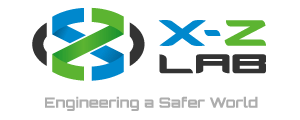Recently, radiation levels in the Japanese town of Naraha have fallen to safe levels following decontamination efforts, allowing the town to lift the evacuation order on its 7,400 residents. Naraha was the first municipality to evacuate after the nearby Fukushima Daiichi Nuclear Power Plant suffered from an earthquake and tsunami that led to a meltdown and contamination. However, only about 100 of the nearly 2,600 households have returned since residents remain cautious about health concerns and lack of infrastructure. To accommodate their concerns, the town is running 24-hour monitoring at a water filtration plant, testing tap water for radioactive materials.
Read More
Real-Time Radiation Monitor Can Reduce One-Third of Radiation Exposure for Medical Workers
In a study sponsored by the North Texas Veterans Healthcare System, researchers found that medical workers significantly reduced their radiation exposure while administering cardiac catheterizations, a type of procedure that often involves X-rays or fluoroscopy, when a real-time radiation monitoring device with auditory feedback was used. Of the 505 patients who participated in the clinical study, half were randomly assigned to wear a device that beeped with increasing frequency—varying between once every 15 minutes, once every 20 seconds, and continuously—depending on the level of radiation it detected, while the other half went without the device. Medical workers in both groups
Read More
Electronic vs. Passive Dosimetry
Health physicist Neill Stanford of Stanford Dosimetry released a presentation examining the differences between electronic and passive dosimetry. Passive dosimeters such as film badge dosimeters and thermoluminescent dosimeters (TLDs) are typically used as the primary dosimeter to record the dose of legal record. With no immediate readouts or alarms, passive dosimeters must be sent to an accredited laboratory for processing in order to procure the dose of record. Electronic dosimeters not only provide immediate readouts and alarm options but also data logging, data upload, and access control. Real-time detection and measurement make electronic dosimeters especially useful in controlling doses, enabling them
Read More
Seven Trends in Medical Radiation Detection
Market research company NanoMarkets identified seven emerging trends in medical radiation detection. According to NanoMarkets, two-thirds of the market for radiation detection equipment is comprised of the medical and healthcare sector. Although this sector has a lower growth rate than others in the market, its sheer size makes it the market’s main revenue generator. NanoMarkets projects that growth within the sector will be primarily for X-ray and neutron systems, as the use of gamma ray imaging systems is on the decline in radiography. Below is a summary of the seven trends: Smaller, portable devices Devices aim for universality, or mobility
Read More
Difference Between Survey Meters, Geiger Counters and Dosimeters
Meters and dosimeters have separate roles in indicating the presence of hazardous radiation levels and are critical life-saving tools in nuclear emergencies. Survey Meters The following instruments measure exposure rate or the intensity of radiation at a location at some point in time: survey meters, field survey meters, rate meters, radiac meters, radiation detection meters, low-range meters, high-range meters, airborne meters, fallout meters, remote monitors, Geiger counters, and even dose rate meters. Like the speedometer of a car shows miles/hr, they all show measurements relative to time, such as R/hr or mR/hr. If you enter a radioactive area and your
Read More
